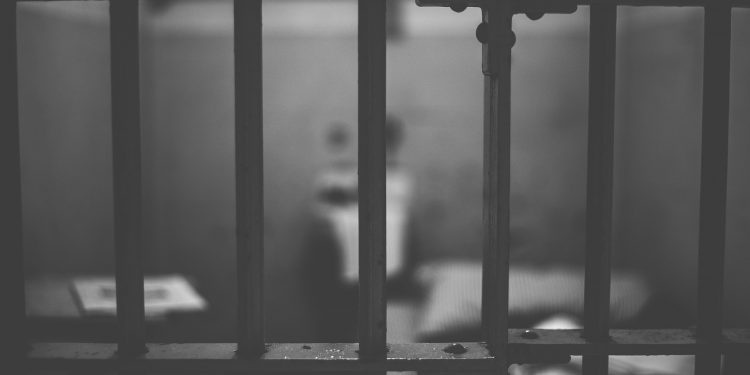Abolishment of Capital Punishment in India

INTRODUCTION
Capital punishment, or the death penalty, is the highest form of punishment awarded to any criminal. It is the legal procedure of the state in which it exercises its power to take the life of the criminal. The current judicial system in India awards death penalty for a few heinous crimes including murder, terrorism, rape leading to the death of the victim, the repeated offence of drug trafficking, etc. under different sections of the Indian Penal Code and other acts. The Indian Judicial system follows the principle of “Innocent until proven Guilty” and the whole process involves a substantial number of hearings of both the victim and the accused and solid evidence. But the question is, “Is capital punishment a solution to the crimes? Does it really help a country reduce the prevalent crime rates? Is it able to create a fear among people to not commit a crime?”
HISTORICAL BACKGROUND OF DEATH PENALTY IN INDIA:
Before independence from British rule, India rarely had any access to justice. Death penalties were awarded according to the whims and beliefs of British rulers. In 1932, Babu Gaya Prasad Singh, who was an elected member from Bihar in the Central Legislative Assembly, demanded a bill to abolish the death penalty for offences under the Indian Penal Code (official criminal code of India that covers all the aspects of criminal law). The motion for circulation was defeated. After a few days, on March 24, 1931, three freedom fighters, Bhagat Singh, Rajguru and Sukhdev, were awarded death sentences for the Lahore Conspiracy case (for boycotting the British Simon Commission and bombing the Delhi Assembly). Later that year, Congress demanded the abolition of the death penalty. However, it remained unchanged.
During 1947 and 1949, the Constituent Assembly debated the existence of the death sentence and Baba Sahib Ambedkar (the Father of Indian Constitution) left the final decision to be made by parliament. However, he was not in favour of continuation of the penalty. He believed India follows the principles of non-violence and having such a punishment defies those principles.
Between 1952 and 1962, the death sentence punishment was discussed and debated in the parliament numerous times and always rejected. Prithvi Raj Kapoor, a nominated member, moved the first resolution in the year 1958. Fourteen MPs (Members of Parliament) took part in the debate. While nine were in favour of India’s death penalty policy, only six members favoured abolition.
The next resolution was moved in the Rajya Sabha by Savitri Devi Nigam in 1961. Nineteen MPs took part in the debate and only six favoured abolitions of the death penalty. There have been in-numerous cases where the death penalty has been debated in parliament.
In 2012, a medical student was gang-raped in a moving bus in the country’s capital Delhi. Following the outrage, the government announced that the death penalty would be applicable to those convicted of rape leading to death. Ram Singh, Mukesh Singh, Vinay Gupta, Pawan Gupta, Akshay Thakur, and one juvenile were the culprits. In 2013, all of them were awarded the death penalty, except the juvenile defendant. In 2015, the Rajya Sabha passed the Juvenile Justice (Amendment) Bill, lowering the age of legally defined juvenile in case of heinous crimes from eighteen to sixteen. Following this, the juvenile defendant in the case was released.
ARGUMENTS FOR ABOLITION OF THE DEATH PENALTY:
India is a country with a lot of social disparity. Those without power, money and contacts are unfairly targeted. The poor and marginalized communities and those whose voices are more likely to go unheard often fall into the trap of judicial trials. Those who can afford private lawyers rarely get to face the death sentence. Article 21 of the Constitution of India guarantees the Right to Life as a fundamental right. This right is defied by the death sentence.
According to the recent Death Penalty India Report by the National Law University, New Delhi, the structural flaws in the criminal procedure and criminal justice system are maximum in cases involving the death penalty. It is impossible to administer it rationally. The final verdict depends on the philosophy and beliefs an individual follows. Judges who oppose it never awarded a prisoner death sentence and the judges who favour it award it. Also, Presidents who believe in abolition like S. Radhakrishnan and A.P.J. Abdul Kalam refused to reject mercy pleas (when a person loses all the remedies available to him/her under all the prevailing laws and the Constitutional Remedies, he/she is eligible to file a Mercy Petition before the President of India or the Governor of the State in which the person resides.), while others who favour the death penalty deny clemency (disposition to be merciful and especially to moderate the severity of punishment due).
According to data published by the Centre on the Death Penalty in their Death Penalty India Report for the period 2000-2015, it turned out that out of 1,486 prisoners sentenced to death by trial courts, only seventy-three were confirmed. Also, one-third of those sentenced were ultimately acquitted.
Delayed justice in the criminal justice system affects the prisoners who might not be guilty. India is known for its high levels of corruption amongst government officials. The police are also known for its inefficiency.
There has been no study conducted so far that has been able to prove that awarding death sentence to prisoners rather than life imprisonment, reduces the rate of crimes in a society. It does not reduce murders, rapes, terrorism, or even theft.
GLOBAL SCENARIO OF DEATH PENALTY:
In 2007, the United Nations proposed to all its member countries to put a stop on awarding the death penalty for any kind of offence. This proposal was rejected by India and several other countries like the US.
The World Coalition Against the Death Penalty observed October 10th as the World Day Against the Death Penalty in 2003. It is supported by numerous non-government organizations and world organizations including the European Union, United Nations, and Amnesty International. Each year it focuses on a particular theme and highlights issues such as living conditions, mental health, poverty, and drugs all around capital punishment.
The number of countries abolishing the death penalty has been increasing from 1991 to 2017. According to Amnesty International 2017, 142 countries including Canada, Mexico, Australia, Russia, South American nations, and most European nations have abolished the death penalty in law or practice. They issued a moratorium (an agreement to suspend a policy or action) for abolishing capital punishment.
Seven countries permit the death sentence for serious crimes such as those during war times. There are at least 29 countries, including Congo and Qatar, which have death penalty laws but have not executed anyone for the last 10 years.
On the other hand, 59 countries including Saudi Arabia, the US, China, India, Pakistan, Iran, etc. continue with the policy. Eighty-four per cent of executions in 2017 were carried out in Saudi Arabia, Iraq, Iran, and Pakistan. China’s statistics continue to remain a secret but Amnesty estimates that China carries out thousands of executions every year.
In the US last year, 23 people were executed. Washington banned the death penalty in 2018. The Supreme Court found that the punishment was awarded in a racially biased manner.
ALTERNATIVES TO THE DEATH PENALTY:
Capital punishment is awarded in the most extreme cases of heinous crimes. These crimes affect the society and hence, may evoke public outrage as in cases of terrorists being awarded the death penalty. No one would want a serial killer, a rapist, or a terrorist to roam freely out on the streets. The public would try to seek revenge for the loss of innocent lives. If not death, they would demand life imprisonment punishment.
Life imprisonment without parole could be an alternative to the death penalty as the prisoner, despite his/her good and changed behaviour, would not be released. Even if parole is given, then it is usually after 25-30 years of imprisonment. After spending such a long period in jail, the prisoner becomes old and fragile. After the prisoner’s release, the police must monitor his/her actions. Additionally, before awarding parole, the offender should be screened to assess if he/she is actually capable of reform. Community based mental health education must be provided to the offender before awarding parole. Engagement of his/her family members, drug abuse prevention programs, and counselling sessions must be provided. Cultural and recreational programs, organization, life skills courses, training, and anger management programs must be provided before release as well.
CONCLUSION
Statistics suggest that the crime rate in India has been declining continuously since 1991. Activists continue to fight for human rights and the right to live and die with dignity mentioned in the constitution. One does not rape a person to show that rape is wrong; the same way of killing a person does not show that killing is wrong. In a way, the punishment of the death penalty simply imitates the crime itself. According to an Amnesty International study, most of the countries have abolished it. The punishment must be judged by its impact on the innocent and not on the criminals.
India is not a country free from corruption and hence there is no mechanism to ensure no miscarriage of justice occurs. It might be misused by political leaders and those in power. Hence, I strongly suggest the abolition of the death penalty.
This OpEd was written by a U4SC Student Intern.
[Image Attribute: Ichigo121212]Disclaimer: The views and opinions expressed in this article are those of the author and/or student and do not necessarily reflect the official policy or position of United 4 Social Change Inc., its board members, or officers.




